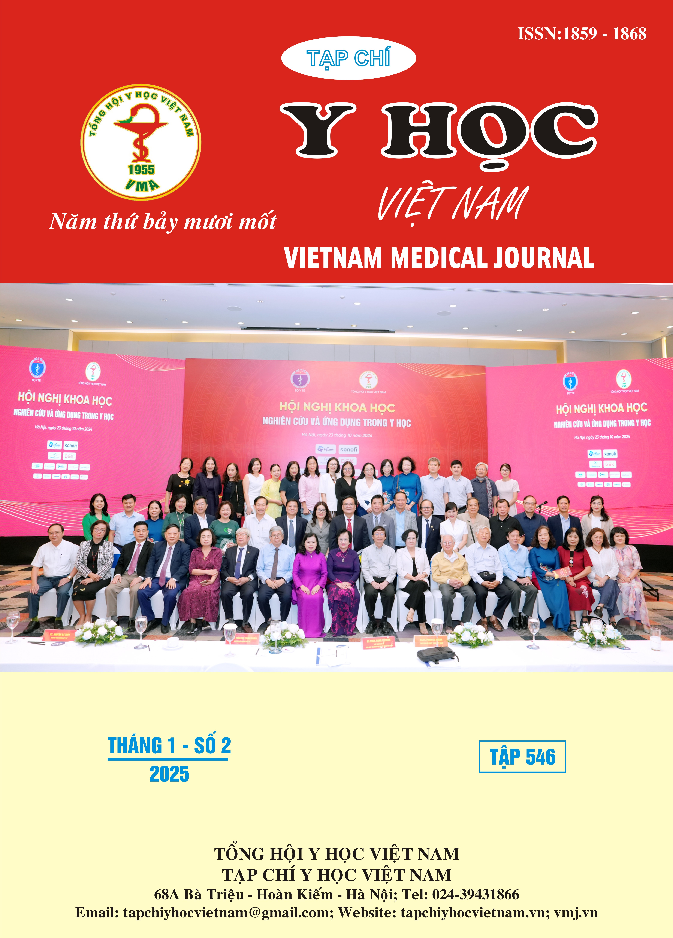FACTORS AFFECTING HEALTH-RELATED QUALITY OF LIFE IN END-STAGE RENAL DISEASE PATIENTSIN NATIONAL CHILDREN’S HOSPITAL
Main Article Content
Abstract
Objective: Analysis of some factors affecting the health-related quality of life of children with end-stage renal disease. Subjects and methods: Descriptive cross-sectional study. Using the PedsQL ESRD 3.0 module to assess the quality of life in 50 patients with end-stage renal disease undergoing renal replacement therapy at the National Children's Hospital. Results: Quality of life scores onthe family and peer interaction scale (76.67 ± 21.36) and perceived physical appearance scale (71.26 ± 26.74) were lower than in other scales. Quality of life scores of the following patients is lower than that of others: female patients, patients who live in rural areas, patients whose parents have stopped their work to stay at home, anemia patients, short-stature patients, and malnourished patients. Quality of life score of kidney transplant patients (91.76 ± 6.76) was higher than hemodialysis patients (70.4 ± 8.7) and peritoneal dialysis patients (77.84 ± 11.58). Conclusions: Patients with end-stage renal disease find it most difficult to interact with family and friends and are affected by changes in physical appearance. Female patients, in rural areas, whose parents had to stay home from work had a lower quality of life. Complications of anemia, malnutrition, and short stature have a negative impact on the patient's quality of life. Kidney transplant patients had a better quality of life than the other two groups
Article Details
Keywords
End-stage renal disease, quality of life, pediatric
References
2. Goldstein SL, Graham N, Warady BA, Seikaly M, McDonald R, Burwinkle TM, et al. (2008) Measuring health-related quality of life in children with ESRD: performance of the generic and ESRD-specific instrument of the Pediatric Quality of Life Inventory (PedsQL). Am J Kidney Dis. 51(2) pp.285–97.
3. Inker LA, Astor BC, Fox CH, Isakova T, Lash JP, Peralta CA, et al. (2014). KDOQI US commentary on the 2012 KDIGO clinical practice guideline for the evaluation and management of CKD. Am J Kidney Dis. 63(5) pp.713–35.
4. Neul SK, Minard CG, Currier H, Goldstein SL. (2013). Health-related quality of life functioning over a 2-year period in children with end-stage renal disease. Pediatr Nephrol. 28(2) pp.285–93.
5. Park K-S, Hwang YJ, Cho MH, Ko CW, Ha IS, Kang HG, et al. (2012). Quality of life in children with end-stage renal disease based on a PedsQL ESRD module. Pediatr Nephrol. 27(12) pp.2293–300.
6. El Shafei AM, Soliman Hegazy I, Fadel FI, Nagy EM. (2018). Assessment of quality of life among children with end-stage renal disease: a cross-sectional study. J Environ Public Health.
7. Tjaden LA, Grootenhuis MA, Noordzij M, Groothoff JW. (2016). Health-related quality of life in patients with pediatric onset of end-stage renal disease: state of the art and recommendations for clinical practice. Pediatr Nephrol. 31(10) pp.1579–91.


